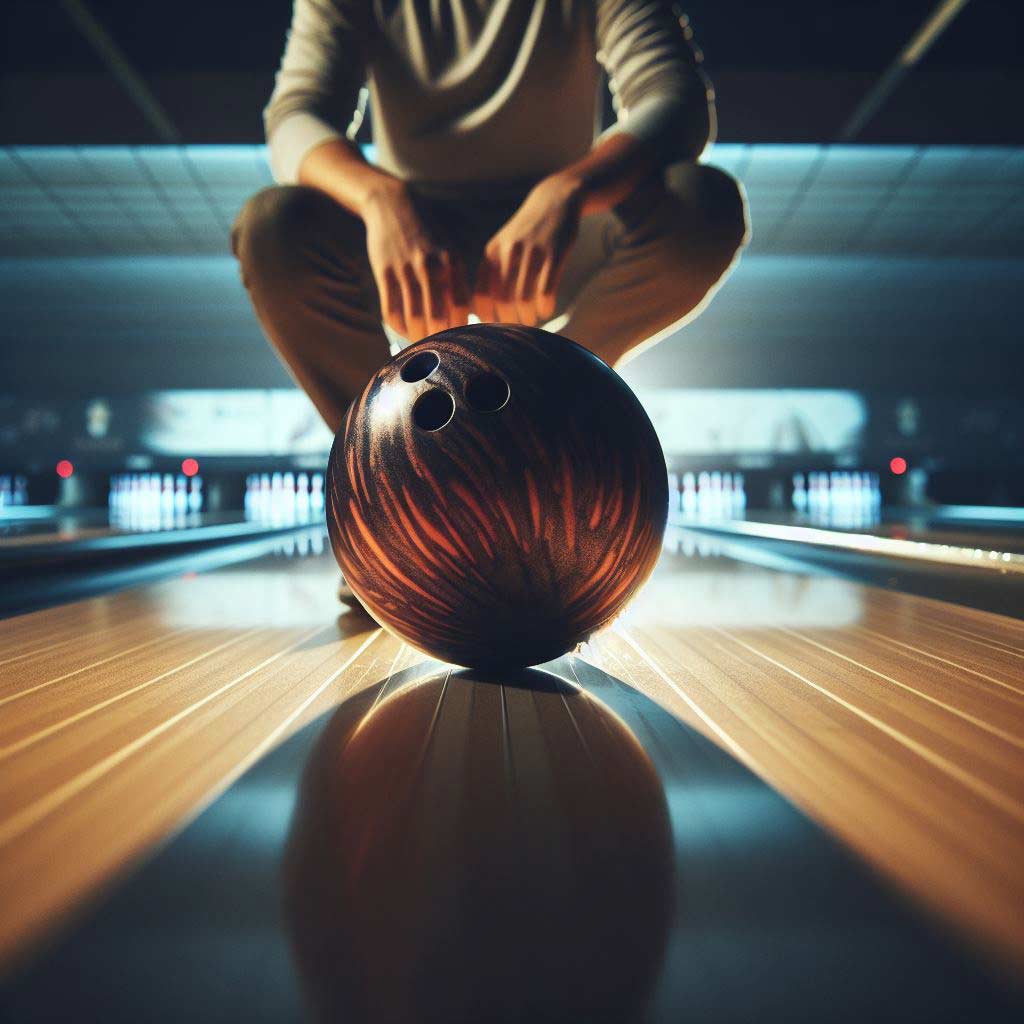If you’ve ever stepped into a traditional bowling alley, you’re likely familiar with the standard ten-pin setup – ten tall, slim pins arranged in a triangle, just waiting to be toppled by a rolling ball.
But venture a bit further north, particularly in the Northeastern United States, and you’ll discover a wholly different bowling experience – the captivating sport of candle pin bowling.
Candle pin bowling is a unique and niche variation of the classic game, with a history dating back over a century. While it may not enjoy the same mainstream popularity as its ten-pin counterpart, this distinctive bowling format has a devoted following of enthusiasts who cherish its singular charms.
In this comprehensive guide, we’ll delve into the fascinating world of candle pin bowling – exploring its history, equipment, gameplay, top destinations, benefits, and the future of this enduring pastime.
Whether you’re a seasoned candle pin bowler or completely new to the sport, this post will provide you with a thorough understanding of what makes this bowling variant so special.
The Origins and Unique Features of Candle Pin Bowling
Candle pin bowling first emerged in the late 1800s in Worcester, Massachusetts, when Justin White, the owner of the Mashie Niblick Bowling Alley, decided to put his own spin on the traditional ten-pin game. Inspired by the slim, tapered shape of candlesticks, White designed a set of pins that were taller, thinner, and more cylindrical than their standard counterparts.
These “candle pins,” as they came to be known, measure just 15 inches tall and have a diameter of only 2.75 inches – significantly more slender than the robust ten-pin design.
Additionally, candle pins lack the distinctive neck and wider base of regular bowling pins, giving them a sleek, uniform appearance. The balls used in candle pin bowling are also distinct, weighing in at a mere 2-3 pounds, compared to the hefty 16-pound balls common in ten-pin bowling.
The gameplay of candle pin bowling differs from the ten-pin version in a few key ways. Rather than the standard 10 pins, candle pin bowlers must knock down 9 pins per frame. Additionally, players are afforded 3 rolls per frame, rather than the traditional 2, in an effort to compensate for the pins’ smaller size and tougher-to-hit shape.
Scoring in candle pin bowling is also unique, with players earning points based on the number of pins they successfully knock down. Unlike ten-pin where strikes and spares are worth the full frame value, in candle pin bowling, the score is simply the total number of pins cleared over the 3 rolls. A “full house” of 9 pins down on the first roll is worth 9 points, while clearing all 9 pins over the course of 3 rolls is worth 27 points.
Despite these distinctions, the core objective remains the same – to knock down as many pins as possible with each roll of the ball. And for dedicated candle pin bowlers, there’s an undeniable thrill in the challenge of toppling those slender, elusive pins.
The Growth and Resurgence of Candle Pin Bowling
While candle pin bowling may have started as a niche regional pastime, it gradually gained popularity throughout the 20th century, particularly in the Northeastern states. At the sport’s peak in the 1950s and 60s, there were thousands of candle pin bowling alleys scattered across New England and beyond.
However, the rise of ten-pin bowling’s national prominence, coupled with the decline of traditional leisure activities, led to a gradual erosion of candle pin bowling’s fan base over the subsequent decades.
By the 1990s, the number of operational candle pin alleys had dwindled significantly, leading many to fear that this unique bowling format was on the verge of extinction.
But in recent years, candle pin bowling has experienced a modest resurgence, as a new generation of enthusiasts has discovered the singular charms of this historic sport.
Spurred by a growing appreciation for retro and niche pastimes, as well as the nostalgia of older bowlers, candle pin bowling has managed to maintain a dedicated following, particularly in its traditional Northeast strongholds.
Today, while the number of candle pin alleys is a mere fraction of what it once was, the sport continues to thrive in pockets across Massachusetts, Rhode Island, New Hampshire, and other parts of New England. Enthusiasts have banded together to preserve beloved alleys, organize tournaments and events, and introduce newcomers to the joys of candle pin bowling.
The Candle Pin Bowling Experience
For the uninitiated, stepping into a candle pin bowling alley can be a truly unique and captivating experience. The lanes themselves often have a distinct vintage charm, with classic wood paneling, retro scoring systems, and the unmistakable sound of those slender pins clattering against the hardwood.
But the real magic of candle pin bowling lies in the equipment and gameplay itself. Holding a 2-3 pound ball in your hands, you’ll immediately notice the stark contrast to the heavy, powerful balls of traditional ten-pin bowling. This lighter weight, combined with the pin’s diminutive size and shape, creates a gameplay dynamic that is both challenging and exhilarating.
As you approach the line and roll the ball down the lane, the suspense builds. Will you manage to knock down all 9 pins on the first roll, earning a coveted “full house”? Or will you have to strategize your subsequent rolls to clear the remaining pins? The thrill of watching those candle pins topple in a satisfying cascade is something that ten-pin just can’t replicate.
Beyond the gameplay, candle pin bowling also offers a distinctly social and communal experience. Many alleys have a lively, convivial atmosphere, with bowlers cheering each other on and celebrating their victories. It’s not uncommon to see multi-generational families or groups of friends bonding over a few frames of candle pin bowling.
For those seeking a truly unique and nostalgic leisure activity, candle pin bowling is an absolute must-try. Whether you’re a seasoned pro or a complete novice, the sheer joy of knocking down those slender pins is an experience that will leave a lasting impression.
Top Candle Pin Bowling Destinations
While candle pin bowling may have originated in Massachusetts, the sport has managed to maintain a strong presence throughout the Northeastern United States. From historic alleys to modern facilities, there are plenty of must-visit destinations for candle pin enthusiasts.
One of the most famous candle pin bowling hotspots is the Woonsocket Thunderbowl in Woonsocket, Rhode Island. Opened in 1958, this iconic alley has hosted countless tournaments and events over the decades, and remains a hub for the local candle pin community. With its classic mid-century decor and well-maintained lanes, the Thunderbowl offers visitors an authentic taste of candle pin bowling history.
Another legendary candle pin destination is Sacco’s Bowl Haven in Somerville, Massachusetts. Established in 1939, this family-owned alley is renowned for its tight-knit community, skilled regulars, and warm, welcoming atmosphere. Sacco’s has also been featured in numerous films and TV shows, cementing its status as a candle pin bowling institution.
Further north, New Hampshire is home to several prominent candle pin alleys, including Boutwell’s Bowling Center in Nashua and Strikers East in Manchester. Both facilities boast impeccably maintained lanes, friendly staff, and a dedicated following of local candle pin devotees.
Beyond these renowned establishments, there are countless other candle pin alleys scattered throughout New England, each with its own unique charm and loyal customer base.
Whether you’re looking to experience the sport’s rich history or simply enjoy an afternoon of nostalgic fun, these top destinations are sure to provide an unforgettable candle pin bowling adventure.
The Benefits and Appeal of Candle Pin Bowling
Candle pin bowling offers a range of benefits and appeals that set it apart from its ten-pin counterpart. Perhaps most notably, the sport is remarkably accessible and inclusive, welcoming players of all ages and skill levels.
The lightweight balls and smaller pin setup make candle pin bowling an ideal activity for young children, who may struggle with the heft and power required for ten-pin.
Similarly, older adults or those with physical limitations often find candle pin bowling to be a more manageable and enjoyable alternative. The game’s slower pace and emphasis on technique over brute strength create a level playing field, where novices and experts can compete side-by-side.
Beyond its accessibility, candle pin bowling also provides tangible mental and physical benefits. The strategic thinking and hand-eye coordination required to successfully navigate the challenging pin arrangement can help improve cognitive function and dexterity. And for those looking to stay active, the act of rolling the ball and maintaining balance during each frame offers a moderate workout.
Perhaps most significantly, candle pin bowling offers a uniquely social and communal experience. Many alleys cultivate a convivial, family-friendly atmosphere, where bowlers of all ages and skill levels can bond over their shared passion for the sport. It’s not uncommon to see multi-generational groups, from grandparents to grandchildren, enjoying a few frames together.
This social aspect, combined with the sport’s nostalgic charm, is a major part of candle pin bowling’s enduring appeal. For many enthusiasts, the experience evokes fond memories of childhood trips to the local alley, or cherished family traditions. In an era of increasing digital isolation, candle pin bowling provides a refreshing opportunity to unplug, interact with others, and revel in the simple joys of a classic leisure activity.
The Future of Candle Pin Bowling
As the number of operational candle pin bowling alleys has dwindled in recent decades, there has been a concerted effort by enthusiasts to preserve and promote this unique bowling format. Organizations like the International Candlepin Bowling Association (ICBA) have worked tirelessly to raise awareness, organize tournaments and events, and ensure that the sport’s rich heritage is not lost to history.
These preservation efforts have helped to sustain a loyal core of candle pin devotees, who continue to champion the sport and introduce it to new generations of players.
Additionally, the growing popularity of retro and niche pastimes has sparked renewed interest in candle pin bowling, particularly among younger adults seeking unique social and recreational experiences.
While the sport may never reclaim the widespread popularity it enjoyed in its heyday, there is cautious optimism among candle pin enthusiasts about its long-term future.
Innovative alleys are incorporating modern amenities and technologies to provide a more contemporary bowling experience, while still honoring the sport’s traditional charm.
Furthermore, there are signs that candle pin bowling could potentially expand beyond its Northeastern stronghold. As more people discover the singular thrills of toppling those slender pins, the sport may gradually gain a foothold in other regions of the country, broadening its appeal and ensuring its survival for years to come.
Ultimately, the future of candle pin bowling will depend on the dedication and passion of its devoted community of players, organizers, and fans. But with a rich history, unique gameplay, and timeless appeal, this niche bowling variant seems poised to endure as a cherished part of America’s leisure landscape.
Conclusion
In a world dominated by the ubiquitous ten-pin bowling experience, the sport of candle pin bowling stands out as a uniquely captivating and nostalgic pastime. With its distinctive equipment, gameplay, and social atmosphere, candle pin bowling offers a bowling experience like no other.
Whether you’re a seasoned pro or a curious newcomer, immersing yourself in the world of candle pin bowling is sure to leave a lasting impression.
From the thrill of toppling those slender pins to the camaraderie of a tight-knit bowling community, this niche sport provides a refreshing antidote to the homogenized entertainment landscape.
So the next time you find yourself in the Northeastern United States, be sure to seek out a local candle pin alley and experience this one-of-a-kind bowling tradition for yourself. Who knows, you may just discover a new passion that keeps you coming back, frame after frame.





